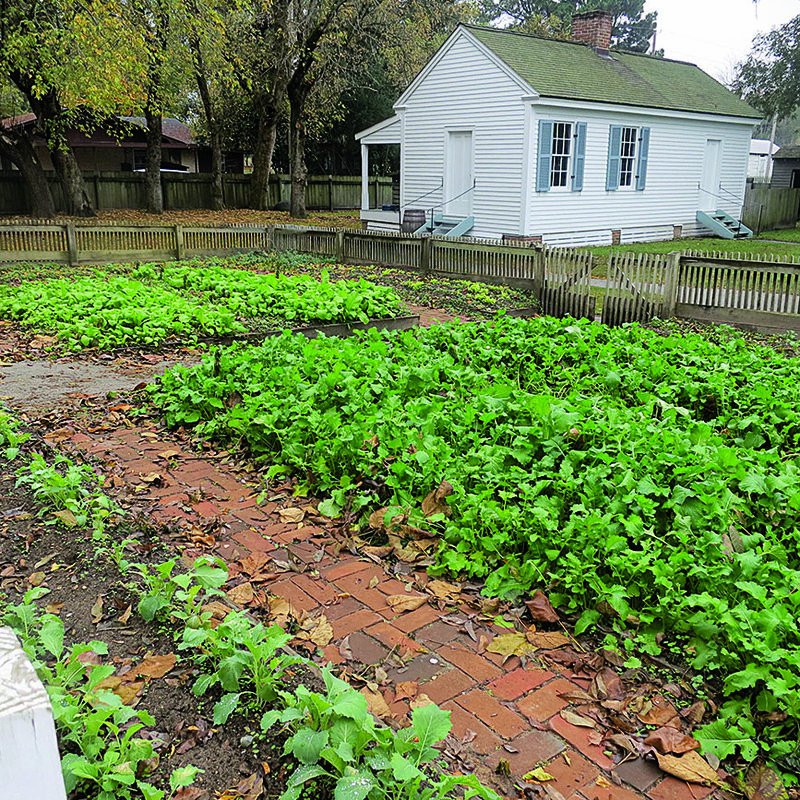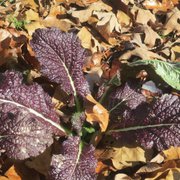DECEMBER
We finally got a taste of cold weather and some rain, but we were way too dry during October and November. Let us hope that we get some moisture throughout the winter, only not of the frozen variety.
• Pay attention to moisture levels around your plants, especially any in containers, your newly planted trees and shrubs and also winter annuals and vegetables. If plants are too dry heading into a hard freeze, there is no buffer to protect them from damage.
• Garden cleanup is in order. Many parts of the state have had light freezes, and some of you may have had a hard freeze. Summer annuals such as coleus, impatiens and sweet potato vines can't take any cold weather, and die back quickly. Others, like Dragon Wing begonia, petunias, calibrachoa and geraniums, will tolerate light freezes and keep on going. If your plants have played out, pull them and clean up the garden. Cut back spent summer perennials and rake up fallen leaves. Good sanitation will help your garden start over next growing season.
• There is still time to plant pansies, flowering kale, cabbage and other winter color if you can find it. When planting late, choose larger, flowering plants or you won't see much color before spring. Get them planted, watered and mulched, and you should be good to go. Fertilize periodically throughout the winter to keep them blooming.
• There is also still time to plant spring-flowering bulbs. Layer different varieties together in the soil for a dramatic display next spring.
• If you planted a late fall or winter garden, the vegetables are
doing nicely. Continue to water when dry and fertilize periodically, too.
• Most cool-season vegetables thrive in cool weather but may need a bit of extra covering when temperatures fall below 26 to 28 degrees. Frost damage is always worse on a still night. Overcast or windy nights tend not to have heavy frost accumulations.
• A flowering plant can be the gift that keeps on giving. If you purchase or receive a poinsettia, remember to keep it evenly moist -- not wet -- and give it bright sunlight during the day. The colorful part is actually a modified leaf and will hold its color for months with proper care. Poinsettias come in a range of colors, from the traditional red to shades of pink, purple, white, speckled and even a pale orange.
• Other welcome holiday gift plants include kalanchoe, anthuriums, Norfolk Island pine and bromeliads.
• The warm weather we had in November gave many of the holiday amaryllis bulbs a jump-start on their season. Amaryllis bulbs have a mind of their own, and when they are ready to grow, they grow whether they are planted or not. Before you buy one, open the box to make sure the bulb has not already bloomed inside the box. If the bulb has sprouted, that is OK, as long as you pot it quickly and give it light. If the flower has already tried to open, don't buy it, as it will not bloom again until next year.
• Fresh greenery and Christmas trees dry out quickly. Make sure you make a nice, fresh cut on the tree when you bring it home. Let it sit in a bucket of water to get a good drink before you bring it indoors. Then keep the tree stand full of fresh water.
VEGETABLE OF THE MONTH
When we talk about "greens" in the South, we could be talking about turnip, mustard or collard greens. These three related vegetables are loaded with nutrition and easy to grow. They are also sometimes called "pot herbs."
All are members of the cabbage family. While turnip plants can be grown for the root as well as the leaves, most greens are grown to be eaten in their leafy stage, sometimes accompanied by the stems.
These three greens are often used interchangeably in recipes, with many folks having their favorite.
Among them, collard greens will tolerate the most cold and heat, while mustard greens probably are the least heat tolerant.
Mustard greens have the best flavor if harvested under cool temperatures. They can be bitter or quite hot if they are exposed to high temperatures. Collard greens taste somewhat more bitter than turnip greens, which tend to be sweeter. Turnip greens are also smaller and more tender than collards.
They all are widely considered to be very healthful foods. A one-cup cooked serving of these greens contains a good supply of iron, calcium, several B vitamins and more vitamin C than an orange -- with fewer than 20 calories ... unless you load them up with pork fat or bacon.
They are also good sources of soluble fiber and flavonoid antioxidants.
All of the greens are easy to grow. They can all be planted in the early cool-season garden and again in the fall and winter gardens. They all do best in full sun with even moisture.
Collards will also do well in the summer in Arkansas, while turnips and mustard will typically not be as tasty when the weather gets hot.
All are easily grown from seed. Once they are up and growing, harvest some of the older leaves on a regular basis. This will keep the plant producing new, tender leaves instead of giving you a lot of older, tough leaves.
If we should get an abnormally harsh cold spell, they may be nipped back, but they usually resprout from the base and come back strong. Cover them with a cardboard box or row cover to give them a little protection, and they won't get nipped.
Today we also have a few varieties of mustard greens that are being used as edible ornamentals, including the giant red mustard with dark purple mature foliage, and the green and red frilly leafed varieties. They can be as pretty as they are edible.
If you aren't growing greens now, it is a bit late to get them started for the winter garden, but be ready to start planting in February.
Janet B. Carson is a horticulture specialist for the University of Arkansas Cooperative Extension Service.
HomeStyle on 12/03/2016

